Killing Ivy on Trees
Article provided by wikiHow, a wiki that is building the world’s largest and highest quality how-to manual. Please edit this article and find author credits at the original wikiHow article on How to Control English Ivy. Content on wikiHow can be shared under a Creative Commons License. Co-authored by Andrew Carberry, MPH Updated: March 18, 2020
Step 1. Get your equipment ready.
The most important tool you’ll need in order to kill ivy is a sharp pair of clippers or loppers, depending upon the thickness of the vines. Older vines can grow as thick as one’s arm, while newer vines are as thin as flower stems. In addition to gathering appropriate cutting supplies, put on a thick pair of gardening gloves to protect your hands as you pull the ivy back.

Step 2. Cut the vines around the base of the tree.
One by one, walk around the tree and cut through every vine growing up the tree at ankle height. Even one remaining uncut vine can nourish the ivy further up the tree, so it’s important to make sure no vine is left behind.
-
- For very old, thick vines, use a handsaw to carefully saw through the vine.
- As you work, be careful not to make cuts on the tree itself. Ivy weakens trees and makes them more susceptible to disease. Cutting through the bark could cause further damage.
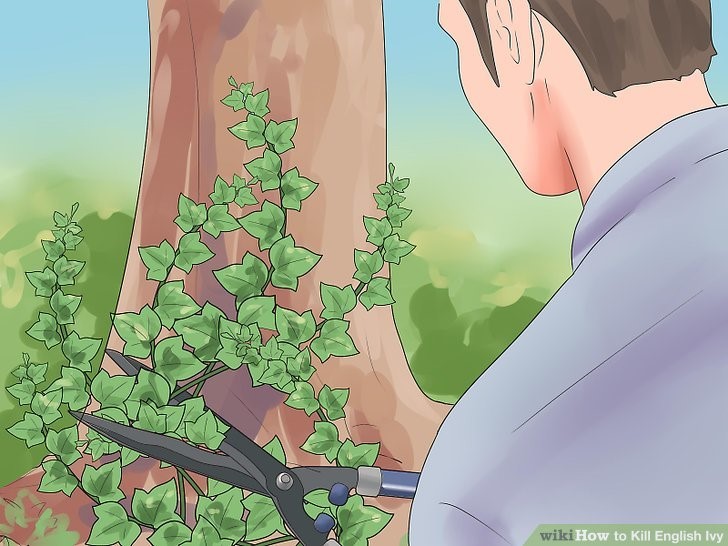
Step 3. Cut another circle around the tree at shoulder level.
Use the same technique to cut all the vines again. This time, pull the cut sections of vines gently from the tree as you go. By making two cuts and pulling away the section of ivy at the bottom of the tree, you’re blocking the vines higher up the tree from getting essential nutrients, and they’ll soon die. Put the cut vines in a pile, then mulch them later so they won’t take root again.
-
- As you pull the cut vines from the tree, be careful not to remove too much bark with the holdfasts.
- The same method works for removing ivy from outdoor walls.
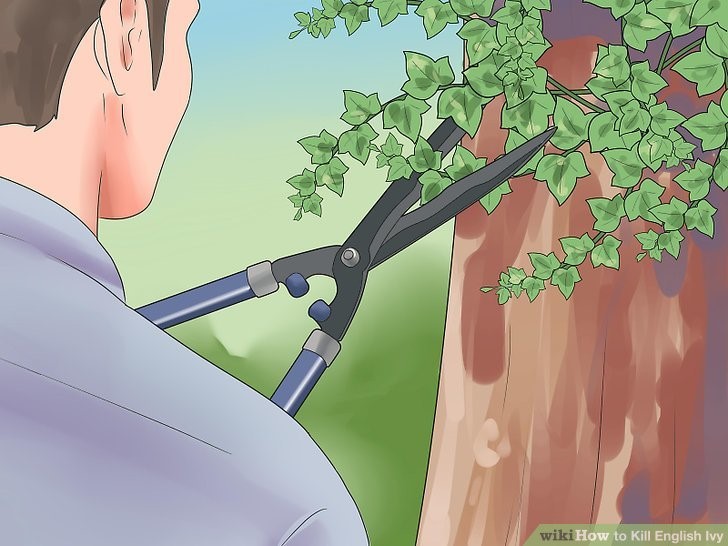
Step 4. Remove the Ivy from the Cut section
Pull gently, removing carefully any roots that have attached underneath the bark layer.
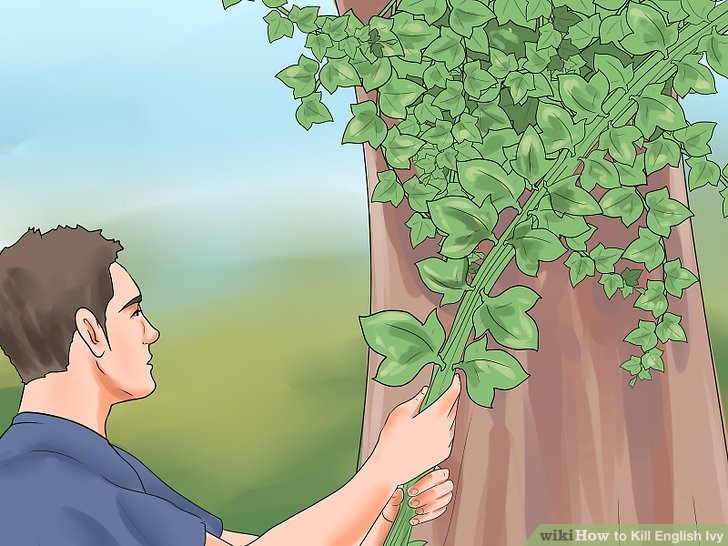
Step 5. Examine the tree trunk for uncut vines.
Take a close look to make sure no vines were left uncut. Cut and remove any you happen to find, taking care not to damage the bark.
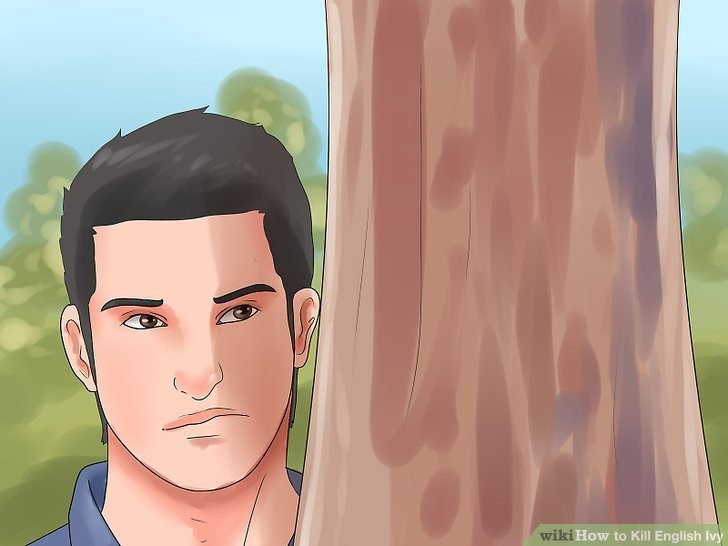
Step 6. Cut away the ivy on the ground.
If the tree is surrounded by a mat of ivy on the ground, you’ll need to remove the ivy from the ground so that it won’t climb back up the tree. Removing a donut-shaped mat of ivy from around the base of the tree is sometimes referred to as a “lifesaver” cut. Here’s how to do it:
-
- Start by cutting a line through the ivy along the ground, from the base of the tree to a distance 4–6 feet (1.2–1.8 m) away. Cut several more lines radiating from the tree. Cutting the ivy into sections will make it easier to remove.
- Make a cut that connects all the lines 4–6 feet (1.2–1.8 m) from the base of the tree.
- Start pulling up the mats of ivy section by section. Keep removing ivy until you’ve cleared the area around the base of the tree such that no ivy reaches within 4–6 feet (1.2–1.8 m) of it.
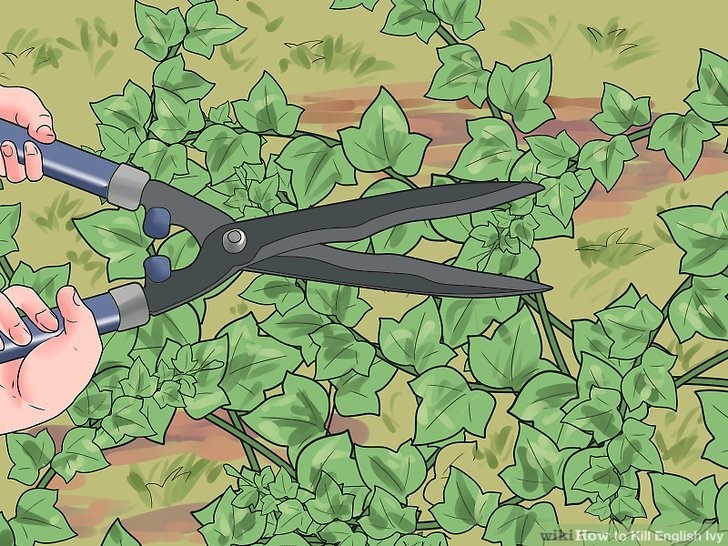
Step 7. Wait for the ivy to die.
Now that you’ve cleared the base of the tree, the ivy growing above shoulder height will begin to shrivel and turn brown. Do not attempt to cut away or pull off vines that have grown above your shoulders. Yanking off the holdfasts will pull away the tree’s bark, leaving it susceptible to disease. The dead ivy will look unattractive at first, but eventually the leaves will fall away and it will become less noticeable.
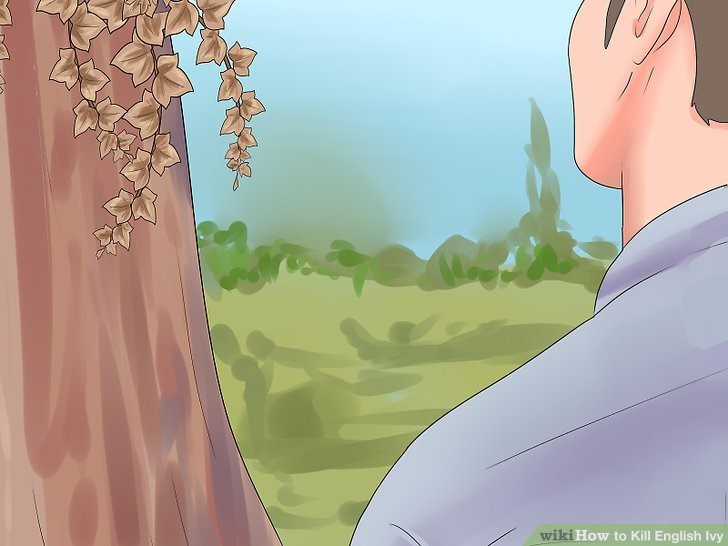
Step 8. Monitor the area for new ivy growth.
After you’ve taken these measures, check back every few weeks to make sure new ivy isn’t crawling in the vicinity of the tree. When you find some, cut it away.
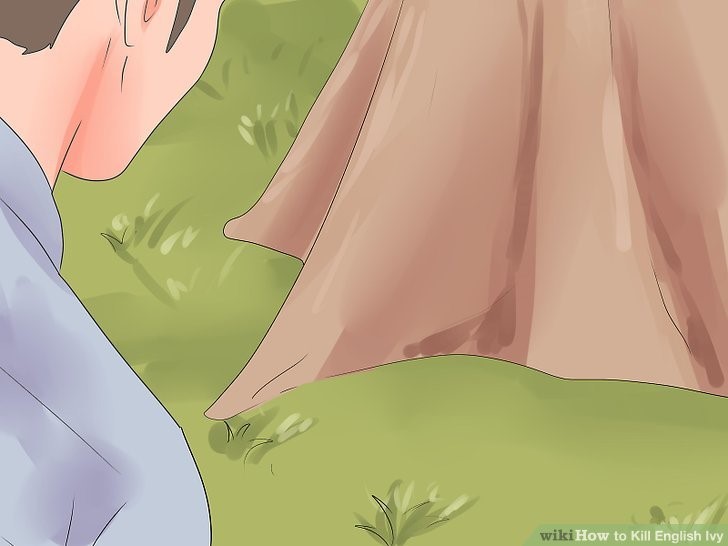
Killing Ivy on the Ground
Step 1. Cut the ivy into sections.
Cut lines through the ivy along the ground in order to divide it into large sections. This will make it much easier to remove the ivy from the ground. Pull the sections apart from one another as you cut. Work carefully around plants and saplings you want to keep.
-
- If you’re working on a hill, cut vertical lines from the top of the hill to the bottom to create sections that you can roll downhill.
- Roll the ivy section downhill using gravity for momentum. But always pull any stray vines in an up-hill direction so you don’t fall backwards downhill.
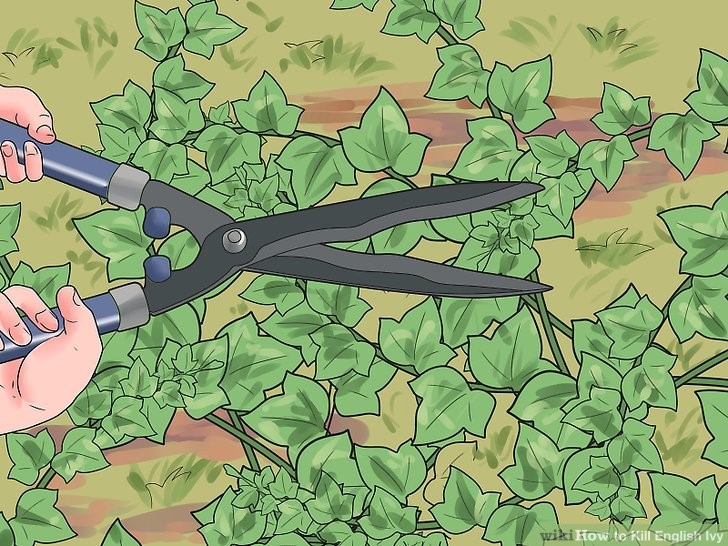
Step 2. Roll the sections off the ground.
Lift the edge of one section of ivy and roll it forward on top of itself. Keep rolling the ivy forward until the entire section has been rolled up into a big log of ivy. Move the log to a separate area and continue rolling up sections until you’ve cleared the area.
-
- Drying the ivy rolls on a tarp in the sun until brittle is the best way to dispose of them and ensure they won’t take root in the area again.
- Vines that are viable can root where they lay on bare ground.
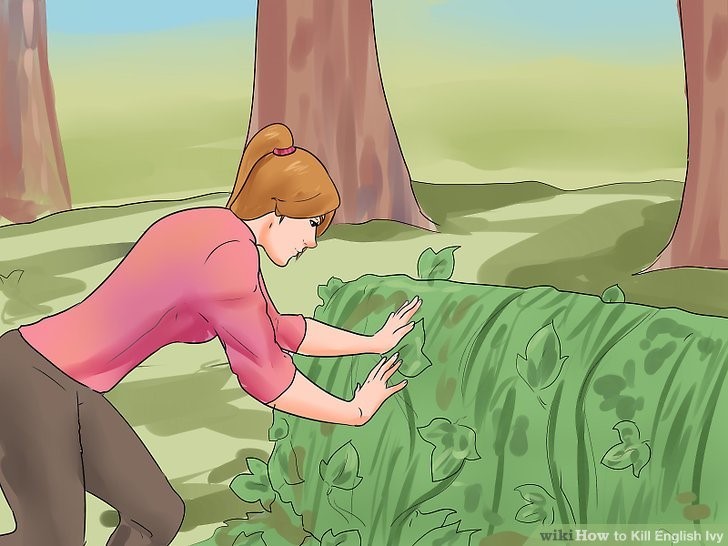
Alternative Method: Use herbicides.
English ivy is difficult to kill with herbicides alone because the plant’s leaves contain a waxy barrier that is difficult for products to penetrate. Therefore, the most effective method is to combine manual removal with the use of a herbicide. Glyphosate is the chemical that works most effectively to kill English ivy.
-
- Spray the area of ivy you wish to kill, but be careful the glyphosate doesn’t reach other plants you want to keep.
- Herbicides are slow-acting, and must be reapplied every six weeks or so.
